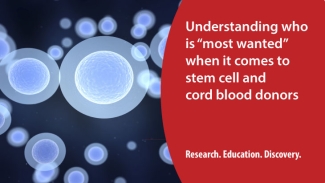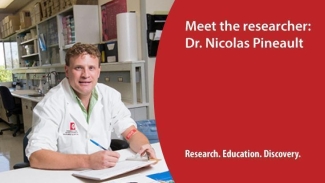Congratulations to Mike Halpenny and team for their award-winning presentation at CBMTG 2016.
Opportunities for knowledge exchange lead to powerful meetings, new discoveries and well-deserved awards.
On that front, Canada is doing a very good job. Dr. David Allan, medical director for Canadian Blood Services’ Cord Blood Bank and OneMatch Stem Cell and Marrow Network, reports that more than 1,000 units of cord blood are now available in the public Cord Blood Bank.
Ten days of discovery Science Odyssey is a 10-day collaborative event geared to engage and inspire Canadians of all ages with science, technology and engineering and mathematics. It brings together a series of fun activities across the country from Friday, May 6 to Sunday, May 15, 2016. In...
Dr. Pineault and his team are working on a cellular therapy to improve engraftment (the process through which new blood-forming cells start to develop in the patient) following cord blood stem cell transplantation.
May is National Hemochromatosis Awareness Month. It gives people the opportunity to learn more about this condition and recognize the symptoms as it’s usually misdiagnosed as something else.





